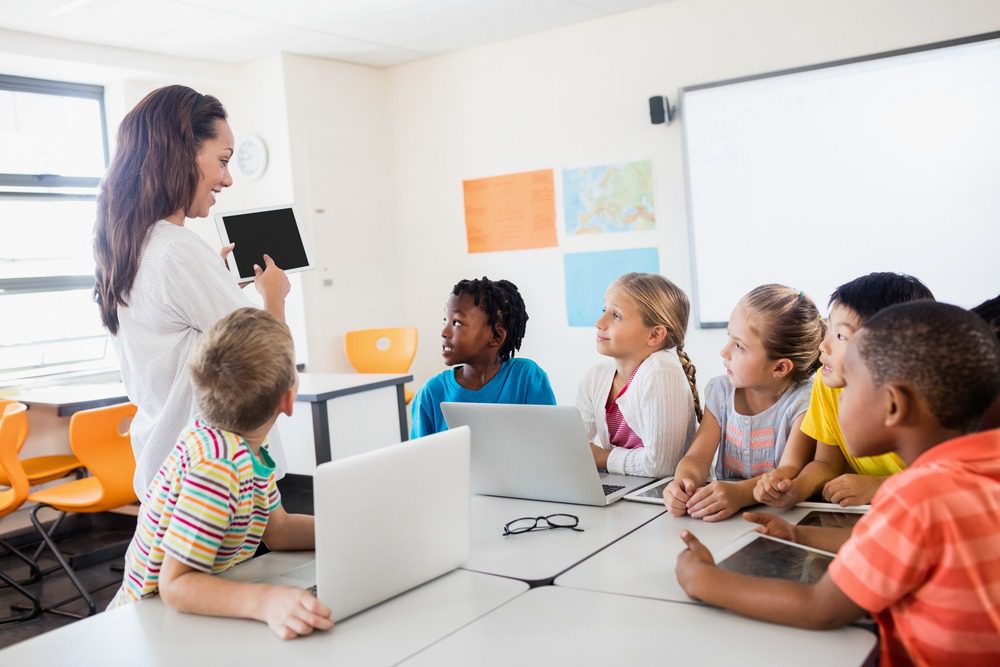The future of education is being shaped by technology, with online learning, artificial intelligence, virtual reality, smartboards, and mobile apps being just a few examples of the innovations making learning more engaging, accessible, and personalized. Cloud computing, distance learning, adaptive learning, and robotics are also transforming the education landscape, providing students with new opportunities to learn and teachers with new tools to enhance their lessons. As technology continues to evolve, it is exciting to imagine what new advancements will be made in education, and how they will help to unlock the potential of learners worldwide.
10 Ways Technology is Shaping the Future of Education
The future of education has never been as exciting as it is now. Modern technology continues to transform the way students learn and teachers teach. From online learning platforms to smart classroom tools, technology is becoming a crucial aspect of education.
1. Online Learning
Online learning has revolutionized the education system, allowing students to earn degrees from anywhere in the world. Massive Open Online Courses (MOOCs), the most popular form of online learning, give students access to thousands of courses from leading universities like Harvard, Yale, and Stanford.
2. Artificial Intelligence
AI technology is transforming the world of education from personalized learning to grading papers. AI-driven tools can analyze student data, evaluate learning patterns, and provide automated feedback. Instructors can use AI-assisted lesson planning to fine-tune their curriculum around student strengths and weaknesses.
3. Virtual Reality
Virtual Reality (VR) is becoming more accessible, allowing students to experience simulations of real-world scenarios. From touring historic sites to exploring the human body, VR technology provides an immersive learning experience.
4. Smartboards
Smartboards are interactive whiteboards that provide a collaborative and interactive learning experience. Teachers can project their lessons on the board, allowing students to interact with the material in real-time. This is an excellent tool for engaging students and enhancing lesson plans.
5. Apps
The rise of mobile learning has led to an increase in education apps. Educational apps provide students with a self-paced, interactive learning experience. Language learning apps, coding apps, math apps, and science apps are just a few examples of the various educational apps available.
6. Gamification
Gamification uses game design elements to make learning more fun and engaging. Educational games have been around for decades, but the rise of technology has brought about a new wave of gamification in education. Students can learn through a game-like experience, making learning more enjoyable.
7. Cloud Computing
Cloud computing has made the sharing of information more accessible and easier than ever. Teachers and students can share projects, collaborate on assignments, and access information from anywhere in the world, as long as they have an internet connection.
8. Distance Learning
Online learning has made distance learning more accessible than ever. Students can earn degrees and certifications from anywhere in the world, without ever having to set foot on a physical campus. This has created opportunities for students who may not have been able to attend a traditional college or university.
9. Adaptive Learning
Adaptive learning uses student data to create personalized learning pathways. As students complete assessments and assignments, the program adapts to their needs and creates a customized learning experience. This ensures that students are only working on material that is relevant to them, enhancing their chances of success.
10. Robotics
Robotics has created new opportunities for teaching STEM subjects (Science, Technology, Engineering, and Mathematics). Robotics kits allow students to build and program their robots, providing hands-on experience in engineering and programming. This has become an exciting way to engage students in subjects that may have been viewed as boring or difficult.
In conclusion, technology has revolutionized the world of education. From online learning to robotics, technology has created new and exciting opportunities for students and teachers alike. As technology continues to evolve, it will undoubtedly continue to transform the educational landscape.
